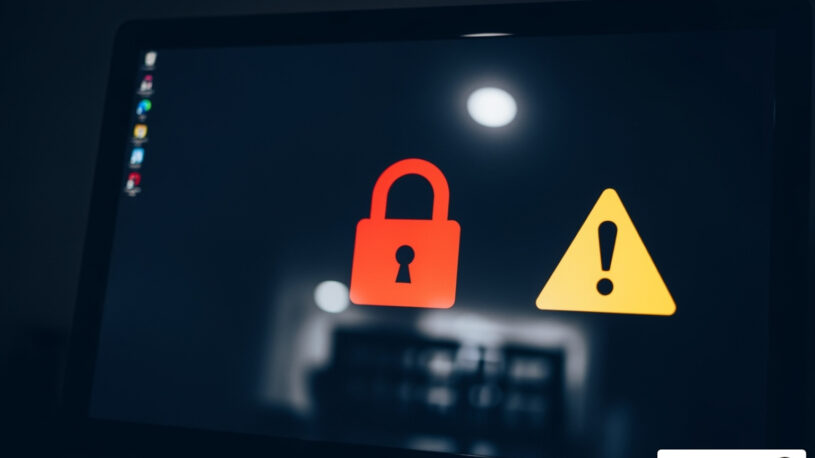

Austin IT Security: Zero Trust Guide for Small & Medium Businesses
The old saying “trust but verify” no longer works within Austin IT security. In 2025, the assumption must be “never trust, always verify.” That’s the foundation of Zero Trust security — a framework designed to treat every user, device, and application as potentially compromised until proven otherwise.
Adopting Zero Trust might sound intimidating, something only big enterprises with large security teams can do.
The truth? Zero Trust scales down just as effectively as it scales up. And in an age where ransomware, insider threats, and supply chain breaches are hitting SMBs harder than ever, the right-sized Zero Trust framework can make the difference between maintaining Austin business continuity and catastrophe.
What Zero Trust Really Means (In Business Terms)
Zero Trust isn’t a single product; it’s an approach anchored in three uncompromising principles:
- Never trust any device or user by default, internal or external.
- Continuously verify identities and permissions.
- Minimize access privilege to only what’s needed at the moment it’s needed.
Traditional perimeter-only security assumes that once someone’s “inside” the network, they can be trusted. With remote work becoming popular and stolen credentials rampant, that’s a dangerous assumption.
Why SMBs Should Care (and You Should Too!)
- SMBs are prime ransomware targets: IBM’s 2024 Cyber Report shows 52% of ransomware attacks hit companies under 500 employees.
- Regulatory compliance in even “non-regulated” industries is tightening, client contracts increasingly mandate strong security controls.
- Remote/hybrid work has collapsed the network perimeter, users and devices now exist everywhere.
Implementation Blueprint: Zero Trust in 3 Phases
The path to Zero Trust isn’t about doing everything at once. It’s a staged rollout, starting with the most critical risk reducers. Let’s map it out:
Phase 1: Foundation & Quick Wins
Establish core identity, device, and access controls that immediately reduce breach risk.
Key Actions:
- Multi-Factor Authentication (MFA): For all accounts, everywhere email, cloud apps, on-prem systems.
- Identity & Access Management (IAM): Centralize account management to prevent orphaned accounts.
- Device Compliance Standards: Require endpoint protection, OS updates, and encryption for any device accessing company data.
- Network Segmentation: Separate sensitive systems from general network traffic to contain breaches.
Success Metric: 100% MFA coverage and zero active accounts for departed employees or contractors
Scenario:
A small marketing agency has dozens of client files in shared cloud folders rolls out MFA and IAM controls. Within weeks, attempted logins from foreign IPs are blocked in real time, without disrupting genuine user workflows.
Phase 2: Expansion & Continuous Verification
Go beyond basic identity checks to enforce “always verify” principles everywhere.
Key Actions:
- Least Privilege Access Policies: Limit each user’s permissions to only what’s necessary for their role.
- Adaptive Authentication: Tighten security dynamically if a login attempt looks suspicious (e.g., new location, unusual device).
- Application Whitelisting: Authorizes only approved software to run in your environment.
- Endpoint Detection & Response (EDR): Monitor and quickly isolate suspicious endpoint behavior.
Success Metric: Zero successful phishing attempts leading to unauthorized data access over a six-month period.
Scenario:
An accounting firm’s CFO logs in from an unfamiliar device. Adaptive authentication prompts re-verification before allowing access to financial systems, stopping a credential theft attack in its tracks.
Phase 3: Maturity & Automation
Integrate policies, monitoring, and automation to make Zero Trust self-sustaining.
Key Actions:
- Security Information & Event Management (SIEM): Centralize log data and automatically flag anomalies.
- Automated Access Reviews: Quarterly audits of user permissions, automatically revoking unused or over-privileged accounts.
- Micro-Segmentation: Isolate workloads and applications from each other to reduce lateral movement in case of breach.
- Incident Response Playbooks: Predefined actions for compromised accounts or devices to shorten recovery times.
Success Metric: Mean Time to Detect (MTTD) and Mean Time to Respond (MTTR) reduced by 50% compared to baseline.
Scenario:
A design firm’s compromised vendor account attempts to access project repositories. The SIEM detects unusual request patterns and automatically triggers a micro-segmented isolation—stopping the breach before it spreads.
Overcoming Zero Trust Myths
“Zero Trust will slow down workflows.”
Modern IAM and adaptive verification tools make authentication quick for verified users and blocks bad actors seamlessly.
“We’re too small for attackers to care.”
Automated hacking tools don’t discriminate, attackers care about vulnerabilities, not company size.
“It costs too much.”
Zero Trust can be scaled, start with low-cost MFA and IAM tools, then expand. The cost of a breach is almost always far greater.
Measuring Business Impact
Zero Trust measures impact:
- Client confidence: Demonstrably secure systems can be a sales differentiator.
- Insurance premiums: Cyber insurers often offer lower rates for companies with documented Zero Trust controls.
- Operational resilience: Faster breach detection means less downtime.
80% of breaches involve compromised credentials. Even the smallest Zero Trust step, MFA, can block the majority of these.
Zero Trust Success Checklist
- MFA enforced org-wide
- Centralized IAM platform in place
- Active device compliance checks
- Network/application segmentation
- Least privilege access model
- Continuous monitoring and alerting
- Regular access permission audits
- Automated incident response plan
Completing this checklist moves Zero Trust from a theoretical concept to a practical reality within your organization. Zero Trust is a practice, not a product: review controls quarterly, time‑box exceptions, and test your response playbooks and automation. If one isn’t checked yet, pick the next two to tackle, assign owners, and set dates—each step shrinks your blast radius without slowing down your business.
Frequently Asked Questions About Zero Trust
Do we need to replace all our existing systems to adopt Zero Trust?
No, Zero Trust is an approach. Start by enhancing identity management and verification with existing tools.
How does Zero Trust affect remote workers?
It secures them the same way as internal employees, with MFA, endpoint compliance checks, and conditional access.
Will customers notice any changes?
They might see increased verification during login, but that builds trust and security confidence.
How soon can we see results from quick wins like MFA and IAM?
Most organizations see a measurable reduction in unauthorized access attempts within weeks.
Is Zero Trust compliance recognized in regulations?
While not always explicitly named, its principles align with requirements like HIPAA, PCI DSS, and GDPR.
An Integral Security Mindset Shift for Your Business
Zero Trust isn’t a trend, it’s the logical advancement of security for SMBs in a borderless, always-on digital economy.
By phasing in core controls, continuously verifying every access request, and automating policy enforcement, all businesses can shrink their attack surface, win customer trust, and recover fast with data recovery in Austin TX. Also, aligning these efforts with rigorous Austin IT compliance ensures long-term protection and resilience.
Austin cybersecurity no longer starts and ends at your network perimeter—it travels with every identity, device, and application your business runs on.
Zero Trust guarantees that wherever your work happens, trust is earned, verified, and never assumed.
Table of Contents









